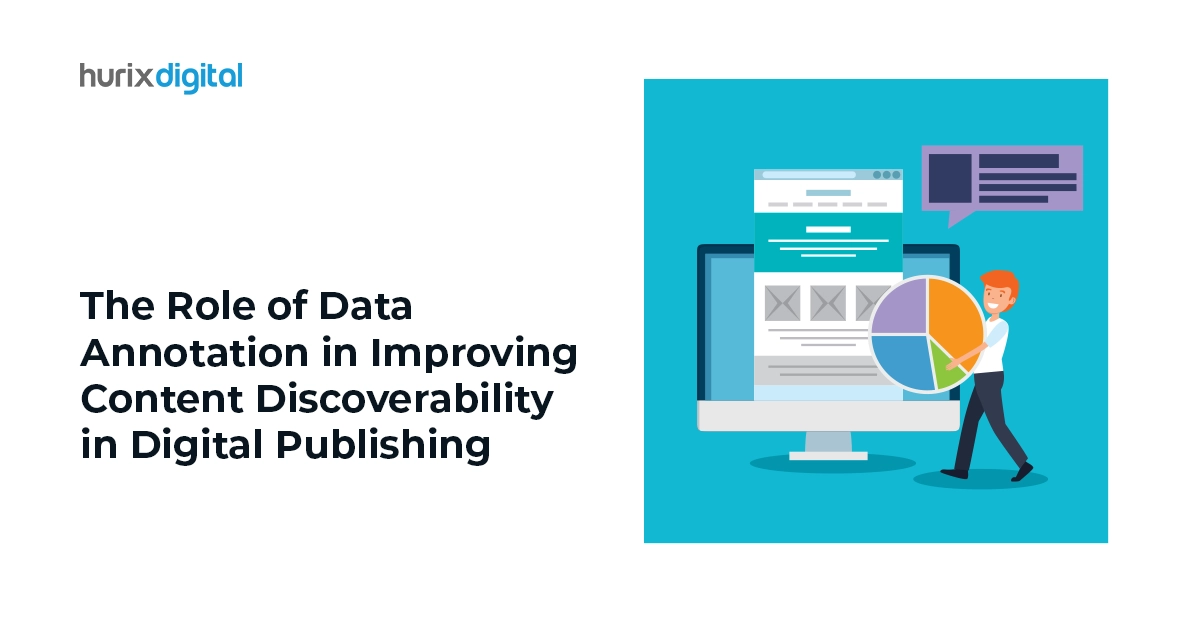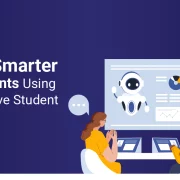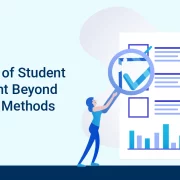
The Role of Data Annotation in Improving Content Discoverability in Digital Publishing
The uproaring trends like, — Machine learning and Artificial Intelligence have brought about a monumental business shift globally across all industries and verticals. In the last few years, there has been a lot of buzz around the use of AI in businesses as well as in our personal, daily lives.
Whatever our take on this — one thing that is for sure is that this revolution is simply too grand to be kept leashed for long. This will loom out of the shadows of yesterday and set a new dawn for the future course of humankind. With its advent, we have officially marked our foot into the foundation of the Fourth Industrial Revolution, also being referred to as “Industrial 4.0“, or 4IR.
In an insight shared by McKinsey & Company, — Industry 4.0 was estimated to have a value-creation potential for manufacturers and suppliers of $3.7 trillion in 2025.
Now, what is the first thing that we care about when it comes to machine learning or AI? It is data. Data is the very backbone of any machine learning model. But there are millions and millions of unstructured data floating around on the web in the form of emails, social media posts, images, audio, text, etc.
Can the machine model understand these varied datasets? Of course not. And that’s where the importance of data annotation comes in. Without data annotation, machine learning algorithms would be lost in a sea of unstructured data. It won’t even be able to distinguish one piece of information from another.
In this blog, we will explain what is data annotation, content classification, content categorization, etc., in very simple words, so that even a non-technical person can understand it. By the end of this blog, you will be able to learn what Semantic Annotation is and how Metadata Enhancement enhances the discoverability of content and positively impacts User Experience (UX) Optimization.
So, if you are an entrepreneur or solopreneur who crunches a lot of data, or if you are a tech enthusiast who enjoys digging into the complexities of AI, or anyone who is getting started with process optimization techniques or who is interested in machine learning, this blog is for you.
Table of Contents:
- What is Data Annotation?
- Semantic Annotation of Web Content: A Process of Data Annotation
- Metadata Enhancement & Its Role in UX Optimization
- What is Content Classification?
- How Content Categorization Can Improve Content Discoverability?
- Conclusion
What is Data Annotation?
Let’s start by addressing what data annotation is all about. It is the action of adding meaningful and informative tags to a dataset, making it easier for machine learning algorithms to fetch, understand, and process the data.
Let us understand via example in simpler words:
Suppose you need to shred a media site for all its sports content and label all the articles regarding sports as sports articles. Now, the idea is to break it down and add labels to it based on its content.
For example, the article can be broken down to which sport or which tournament, game report, player analysis, game predictions, etc. If the data is tagged only as sports, the annotation has less specificity. But with all the other tags, the chances of the article being found in the search results get higher.
So, the core function of annotating data is to label data. It is necessary to have two things when annotating data:
- Data
- A consistent naming convention.
As labeling projects grow more mature, the labeling conventions generally increase in complexity.
Also Read: Your Comprehensive Guide to Accelerating Your Digital Journey with Adobe Experience Manager
Semantic Annotation of Web Content: A Process of Data Annotation
Semantic Annotation is a type of data annotation that applies specifically to texts, documents, etc. Here’s what you should know:
- Semantic annotation or tagging is the process of attaching metadata to a text document or other unstructured content regarding the relevant concept (e.g., people, places, organizations, products, or topics).
- Unlike classic text annotations, which are for the reader’s reference, semantic annotations can be used by machines.
- Semantic metadata helps computers to interpret data by adding references to concepts in a knowledge graph.
- Semantically tagged documents are, hence, easier to find, interpret, combine, and reuse.
Metadata Enhancement & Its Role in UX Optimization
Metadata means data about data. Metadata latches the data with information that makes it easier to find, use, and manage. This is also called Metadata enhancement or enrichment. The more precise and detailed the information is, the more discoverable it becomes.
Just like a library card that describes a book, metadata describes objects and adds more granularity to the way they are represented. Metadata ideally describes physical and digital objects. It helps the content classification, access, and storage of digital assets of all kinds.
Thus, Metadata enrichment enhances the discoverability of content, user experience (UX) optimization, and engagement. It also positively impacts SEO and your Google rankings.
What is Content Classification?
The most fundamental form of understanding content for the machine is classification. Content classification maps a piece of content (or an entry in the search index) to one or more predefined sets of categories. The categories can be product types, document topics, image colors, or any other set of values that describes the content.
Classifying content makes it more findable, as the classifications can also be used for retrieval and ranking. Classification of websites helps in filtering content, blocking out suspicious ones, and helping companies decide on ad placements.
Now, the process of classifying web content is done through content categorization.
How Content Categorization Can Improve Content Discoverability?
Content categorization is a way to classify web content so that it can be assigned to an appropriate category, for example, news, blogs, shopping, etc.
The ability to find content in a content management system is very important. One of the main reasons why one incorporates an updated content management system is to make content easily discoverable. It helps you to take action, make a business decision, do R&D, etc.
But to be able to make something found, one has to anticipate how the users might search for it. That’s where content categorization comes into play. The quality of the categorization of each piece of content either makes it findable or lost.
For example, many companies have blogs on their websites. Each blog will probably have one or more categories as well as one or more tags assigned to it. The post will show up each time a reader selects one of the categories that have been assigned to it. Even date or chronology is a method of content categorization.
A good tagging is believed to last the lifetime of the content.
Also Read: Ready for 2024? The Alt Text Toolkit for Developers and Content Creators
Conclusion
We could see how data annotation, semantic annotation, content classification, content categorization, and metadata enhancement — all help in making content discoverable in the digital forum. Quite naturally, it also enhances the user experience. To be able to get all these done automatically through machine learning saves a lot of time and effort for all.
At Hurix Digital, we offer all such future-ready technologies and services for organizations across the world. We use the most updated trends to keep our clients way ahead of their competition. Contact us today and get a free consultation for your business.

Vice President – Digital Content Transformation. He is PMP, CSM, and CPACC certified and has 20+ years of experience in Project Management, Delivery Management, and managing the Offshore Development Centre (ODC).



